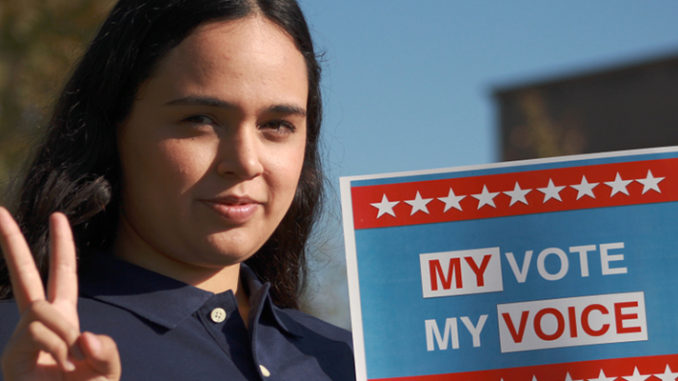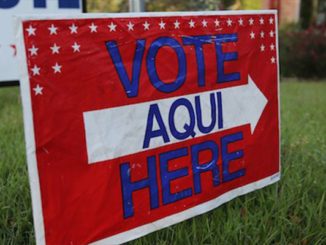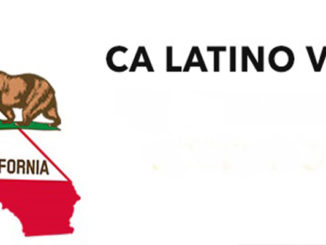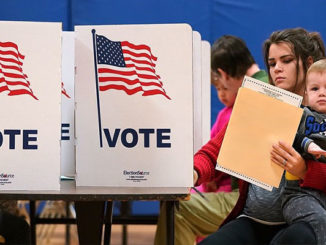
To avoid a disappointing 2020 turnout, the party needs to understand the nuances of the Latino electorate.
by Arnold Garcia and Kyle Longley
By the evidence of the Democratic primary so far, it’s clear that no leading Democratic candidate has any idea of how to engage Latinos. The Latino electorate has always been complex, a reality that Democratic candidates, consultants and election “experts” fail to grasp or simply ignore.
The 2018 midterm elections showed a sharp increase in Latino voter turnout, but the continued failure by Democrats to understand the nuances of the Latino electorate could well result in another forehead-slapping, head-scratching rerun of disappointing turnout in 2020.
Take a moment from the first debate. When discussing civil rights, former Vice President Joe Biden struggled to expand beyond African-Americans in his discussion of civil rights, throwing in at the last minute L.G.B.T.Q. into his answer.
Lyndon Johnson was the last Democrat to truly understand the struggles and passions of the Latino communities. Why do Democrats stumble so badly at engaging them? There are many answers, but a key one is that most of them see race in a black-white prism. This blind spot prevents the Democrats from building on their long record of civil rights as well as programs to assist people, regardless of color, in labor rights, health and education.
Most think that focusing on immigration in opposition to a xenophobic president will pull in Latinos. That is only partly right. Few Democrats seem to understand that the current immigrants are primarily Central Americans, a relatively small segment of the Latino population. In fact, many Mexican-Americans view the new immigrants with contempt (their own racialized view of their southern neighbors). They also think of them as competitors for jobs and influence in places like Los Angeles, Phoenix, Denver and Houston.
That native-born Hispanics hold complicated views on immigration is hardly news to anyone paying even minimal attention. A study by the Pew Research Center in 2017 showed Latinos overwhelmingly ranked improvements in education on a list of top priorities. Second came a strong national defense against terrorist attacks. Third came a strong national economy. Fourth was reduced health care costs. Immigration was fifth on the five-item list.
Equal rights, job programs, criminal justice system reform and housing are also important to Latinos. Note that those issues tie directly to the strong belief that the answer to social and economic woes is a sound education. These conversations matter to Latinos in battleground states like Florida, Arizona, Texas and Colorado.
So where could the candidates start in doing a better job of outreach to the Latino population? First, understand a fundamental fact: Latinos are not monolithic. A majority are Mexican-Americans (over 60 percent), but there are Cubans, Dominicans, Central Americans and the often forgotten Puerto Ricans. Continuing a one-size-fits-all strategy is a waste of time, money and energy that benefits only clueless consultants. This is important because issues in the Southwest and West may not mean as much to Cubans in Florida or Puerto Ricans in New York. Complexity and nuance matter.
Then there is the abortion land mine. People wondered why Hillary Clinton lost so many Latino votes. There are several reasons, but one stands out. Some priests in Phoenix’s Mexican-American neighborhoods harangued their parishioners the weekend before the election about the evils of abortion and often implicitly tied it to Mrs. Clinton. This undoubtedly affected Latinos, especially women who attend church regularly.
In addition, Democrats should note that there has been a drift of Latinos from the Roman Catholic Church to the evangelical Christian churches. Whatever other differences evangelicals and Catholics may have, they share a negative view of abortion, and the Latino migration to Protestant and evangelical churches is nothing new.
While Democrats can hardly be expected to turn their backs on the choice issue, they could at least acknowledge that others have legitimate concerns. By doing so, they might blunt some of the intransigence that many Latinos see.
Moreover, Democrats should not be afraid to be patriots. Most Latinos are proud of their contributions to the nation’s defense in all its wars and in the years between.
Democrats could also explain how their economic policies benefit Latinos. Repealing Mr. Trump’s tax plan, which soaked the poor and middle class to feed the rich, would be a good start. Democrats could also discuss providing better opportunities for housing and basic necessities, especially in high-cost areas such as Southern California and New York.
There are many other ways for Democrats to win the Latino vote, including denouncing the implicit and explicit racism that has swept the country in the past three years. But it is imperative to have effective outreach and address Latinos’ continuing population growth. The Pew Center projects that Latinos will be the largest minority in the 2020 electorate.
The Latino potential remains untapped and will continue to be so if Democrats believe that uttering a few words in heavily accented Spanish is “muy bueno.”
Arnold Garcia was the editorial page editor of The Austin-American-Statesman from 1991 to 2013. Kyle Longley is a professor of history and political science at Arizona State University.



